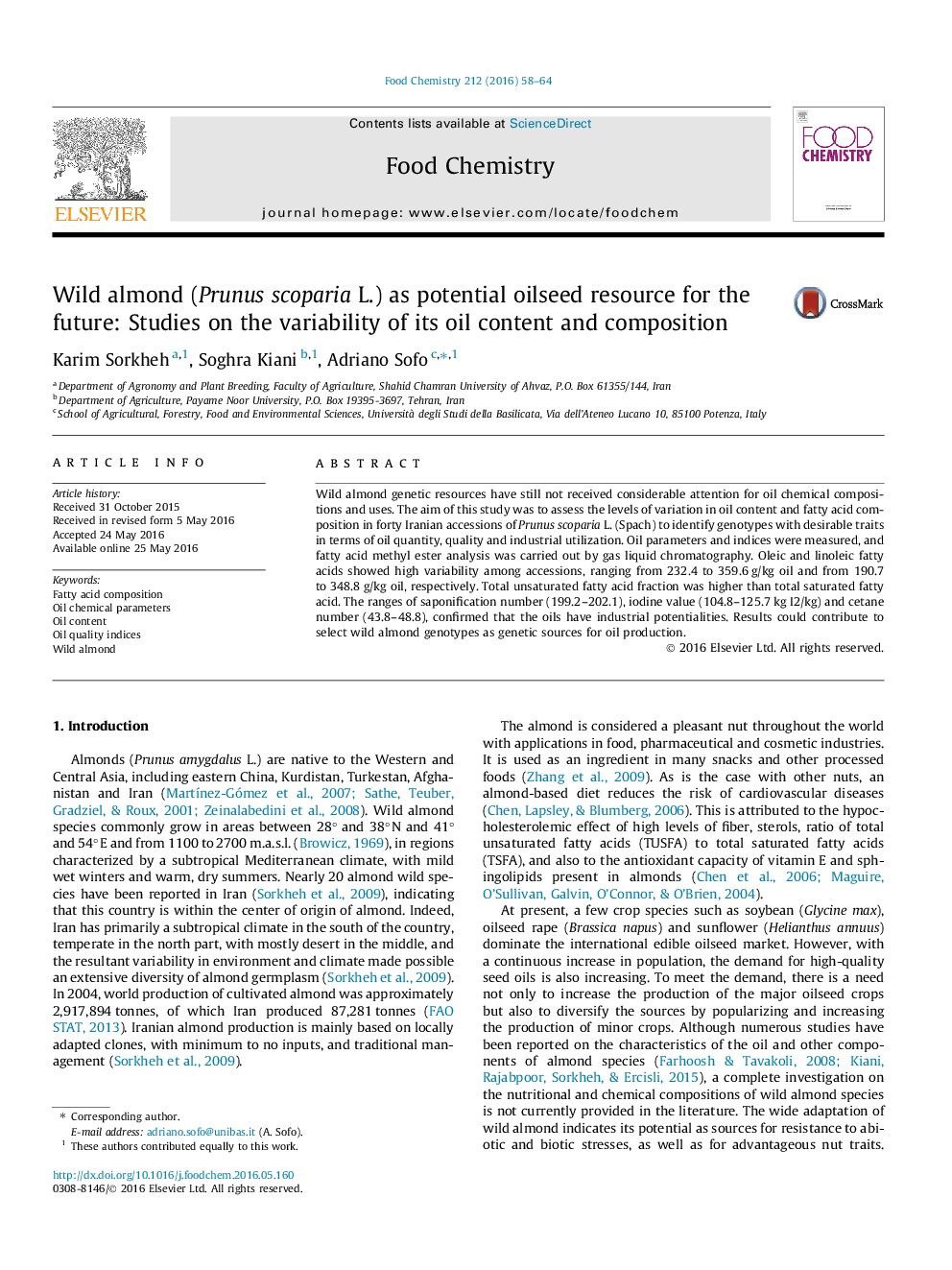| Article ID | Journal | Published Year | Pages | File Type |
|---|---|---|---|---|
| 1185027 | Food Chemistry | 2016 | 7 Pages |
•The seed oils from 40 wild almond (P. scoparia) accessions were analyzed.•Variability among accessions was found for oil content, fatty acid composition and oil indices.•Accessions containing highest oleic and linoleic acid were identified.•The oils analyzed have strong potentialities for their application in food industry.•Data on fatty acid composition could guide a selective almond breeding program.
Wild almond genetic resources have still not received considerable attention for oil chemical compositions and uses. The aim of this study was to assess the levels of variation in oil content and fatty acid composition in forty Iranian accessions of Prunus scoparia L. (Spach) to identify genotypes with desirable traits in terms of oil quantity, quality and industrial utilization. Oil parameters and indices were measured, and fatty acid methyl ester analysis was carried out by gas liquid chromatography. Oleic and linoleic fatty acids showed high variability among accessions, ranging from 232.4 to 359.6 g/kg oil and from 190.7 to 348.8 g/kg oil, respectively. Total unsaturated fatty acid fraction was higher than total saturated fatty acid. The ranges of saponification number (199.2–202.1), iodine value (104.8–125.7 kg I2/kg) and cetane number (43.8–48.8), confirmed that the oils have industrial potentialities. Results could contribute to select wild almond genotypes as genetic sources for oil production.
